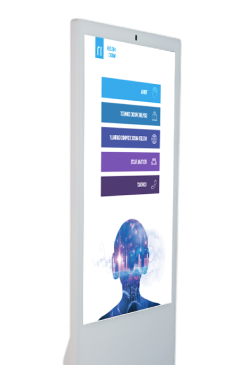

Event Solutions

Our Work

6 Keys to Getting More Engagement From Touchscreen Tables
Attention is a very treasured commodity and this is particularly true when considering touchscreen tables and your audience. Individuals are moving through your booth or facility on their way somewhere, for some purpose other than looking at your touchscreen tables. You have to make them look, get them to slow down and pay attention, care about your message and take an action, all in the space of about seven seconds. No matter how robust your touchscreen table software is, if you don’t comprehend engagement, you’re killing your efforts. Here are a few tips and actions to help with your touchscreen tables engagement: Display something new. Folks all walk by that poster from two months ago without seeing it, and it’s no different with touchscreen tables. Folks will look for new material, and if they don’t see it each time they tune in, they’ll ultimately tune out, possibly forever. Change layouts often. Moving features around on a touch screen is a great way to catch the eye of passers-by. This is particularly key if you have a standard playlist of marketing messages that stays up for a day or two. Even though the display content isn’t changing, moving it around can “trick” viewers into believing they’re seeing something new so they pay more attention. Embrace visual hooks. Help your audience by giving them well-timed, relevant data on touchscreens that they care about. As they become more trusting on your touchscreen tables for this information, they’ll tune in more often to see these items, so they’ll see your other announcements as well:
- Current time
- Day and date
- Weather (current and forecast)
- News headlines
- Countdowns
- Social media feeds
Create campaigns. If you use a single marketing message design to communicate – no matter how few times you display it – it will become old and people will tune out. Also, different individuals are attracted to different strategies, so you want to use campaigns (the same digital message delivered in different forms) over a continued period of time for marketing saturation. Think long-term. The long-term theory says that around half your audience will answer quickly, but the other half will need more time to take action. So, you need to start marketing messaging early and use long-tail campaigns. Use teasers to peak attention before you launch your campaign, and try to tell a story to engage your target audience, so they’ll want to see what will come next. Deliver on target. Really think about the type of audience you’re engaging with, where they are, and when they’ll be there. The last thing you want to do is deliver your most significant messages during off-hours, and you don’t want to show announcements to customers who don’t need them.